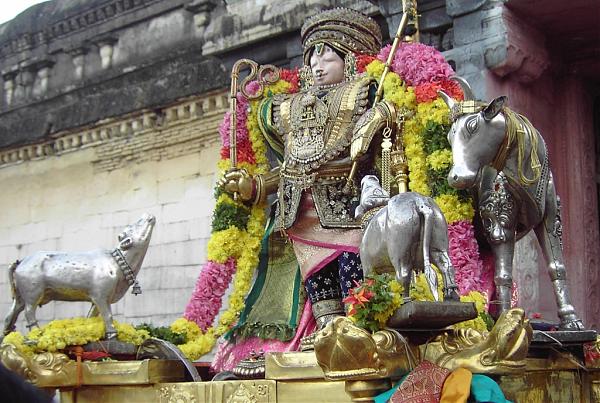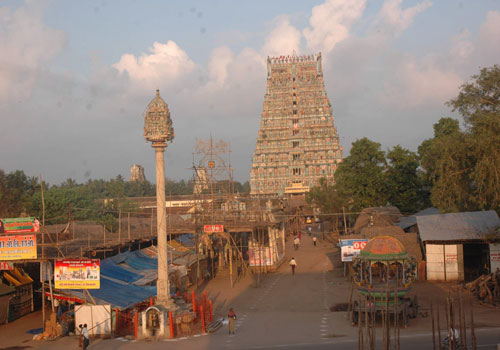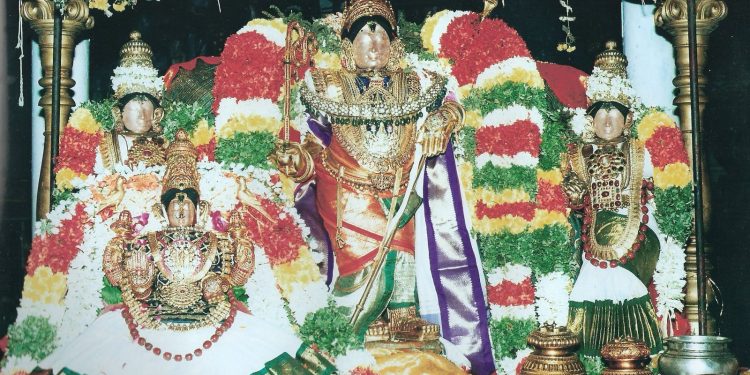Rajagopalaswamy temple is a Vaishnavite shrine located in the town of Mannargudi, Tamil Nadu, India.The presiding deity is Rajagopalaswamy, a form of Lord Krishna. The temple is spread over an area of 23 acres and is one of the important Vaishnavite shrines in India. The temple is called Dakshina Dwarka along with Guruvayoor by Hindus.
Shrine’s History
The temple was first constructed by Kulothunga Chola I, with bricks and mortar, indicated by a various stone inscription found on the site.The place Mannargudi is termed Sri Rajathi Raja Chathurvedhi Mangalam and the town started to grow around the temple. Successive kings of the Chola empire, Rajaraja Chola III, Rajendra Chola III and kings of Thanjavur Nayaks, Achyuta Deva Raya expanded the temple. The temple contains inscriptions of the Hoysala kings and some Vijayanagara grants and many records of the later Nayaks and Marathas.The Thanjavur Nayaks made the temple as their dynastic and primary shrine and made significant additions.The current temple structure, hall of 1000 pillars, main gopuramand the big compound wall around the temple was built by the king Vijayaraghava Nayak. Raghunathabhyudayam, a doctrine by Nayaks explains the donation of an armour studded with precious stones to the main deity by the king. He erected the big tower in the temple so that he can view the Srirangam Ranganathaswamy temple from the top of Mannargudi.
The Nayaks were especially interested in music and it was promoted in both the temples. Instruments like Mukhavina, Dande, Kombu, Chandravalaya, Bheri and Nadhaswaram were commonly used in the temple service. According to historian K.V. Soundararajan, the Rangantha temples in South India built during the 9th and 10th centuries have a systematic arrangement of subsidiary deities as seen in this temple along with the Appakkudathaan Perumal Temple at Koviladi, Sowmya Narayana Perumal temple at Thirukoshtiyur, Veeraraghava Perumal Temple at Mannargudi and Rangantha temple at Srirangapatna


Architectural Relevance of This Shrine
The image of the presiding deity is 156 Feet tall. There is a big tank at the entrance of the shrine where rain water is collected. The temple complex has 16 gopurams , 7 prakarams, 24 shrines, seven mandapams and nine sacred theerthams . The utsava is a bronze figure from the Chola period. It shows keshabanda type of coifure and restrained ornamentation, typical of the Chola bronzes of the 11th century. The temple tank is called Haridra Nadhi, 1,158 feet long and 837 feet broad, making it one of the largest temple tanks in India

Shrine’s Map Location and How to Go There
By Road
The nearest bus stop is Mannargudi.
By Rail
The nearest railway station is Mannargudi.
By Air
The nearest Airport is Tiruchirappalli
Events Celebrated at This Shrine
Brahmmotsavam in Panguni (March-April), the Summer festival in Chithirai Vaikasi (April to June), Aadi Pooram (July-August), Navarathri in Purattasi (September-October), the Oonjal festival for Rajagopalaswami in Masi (February-March) are the festivals grandly celebrated in the temple.













































